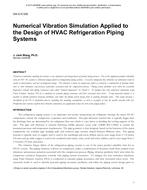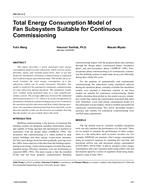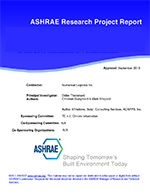Thermal response factors offer an accurate way to characterise the performance of building components. Although the existing techniques use time-series methods, they also require special environmental apparatus and boundary conditions in order to achieve consistent results. A novel method for estimating the response of building components in unsteady boundary conditions is developed and then compared against the standard U-value method. The method uses a point algebraic technique to extract response factor values directly from the data. The response values are estimated from time-series statistical central moments. The response factors represent the dynamic thermal transmission, and the area under the response factor is the steady-state U-value.
KEYWORDS: calculating, heat flow, thermal properties, performance, buildings, materials, components, non steady state, comparing, transmittance, steady state
Citation: ASHRAE Trans. 1992, vol.98, Part 2, Paper number 3605, 79-85, 5 figs., refs.
Product Details
- Published:
- 1992
- File Size:
- 1 file , 610 KB
- Product Code(s):
- D-17723


